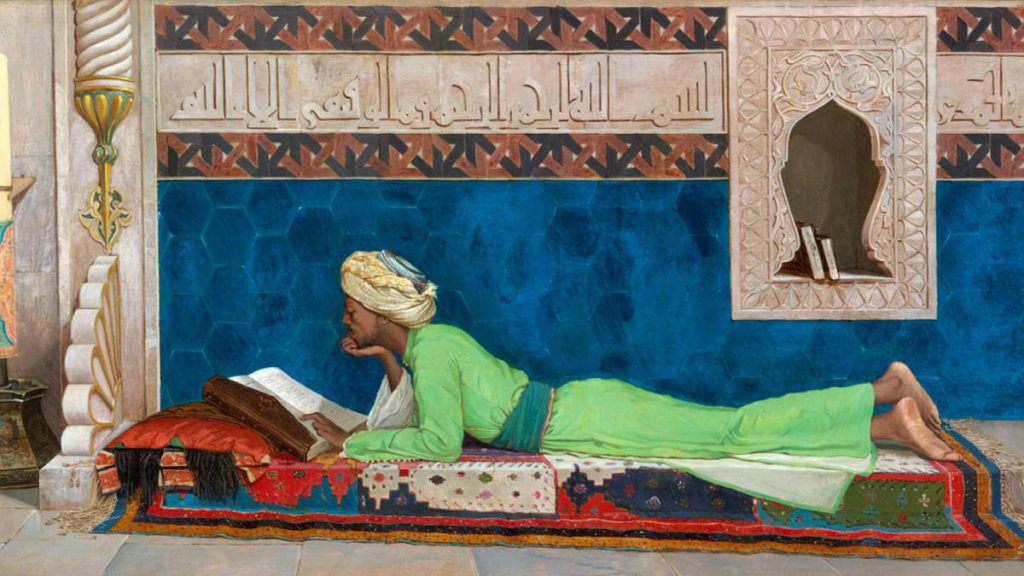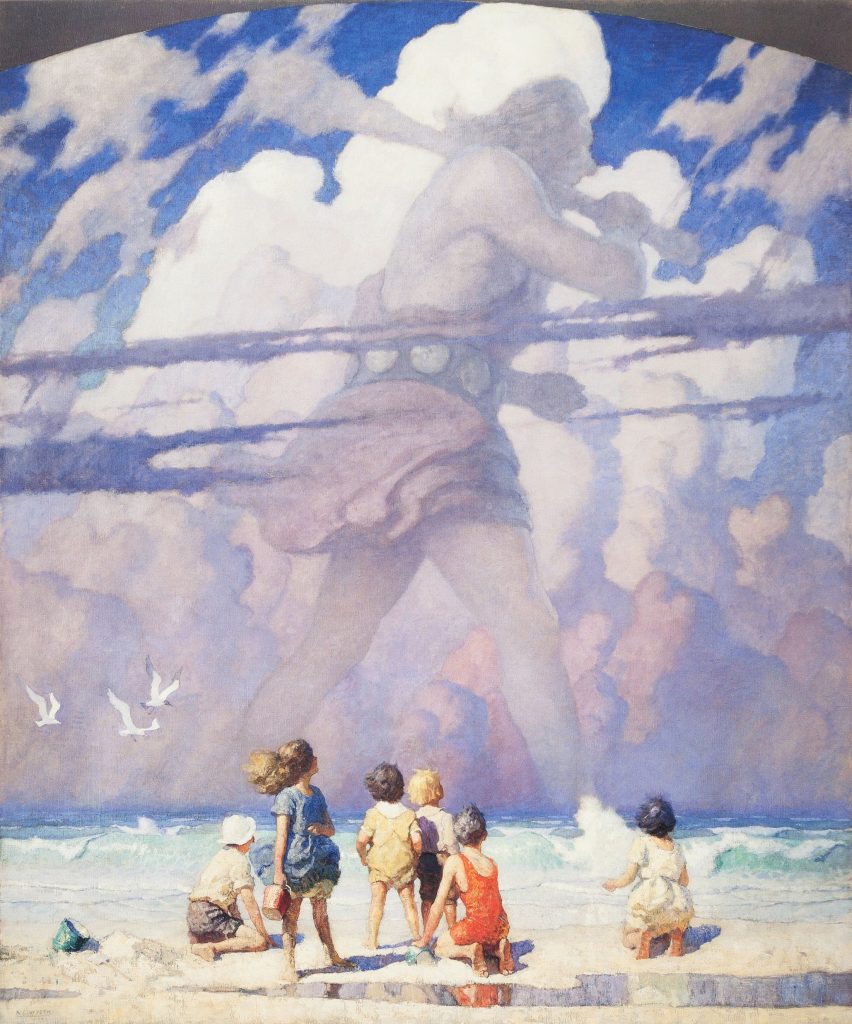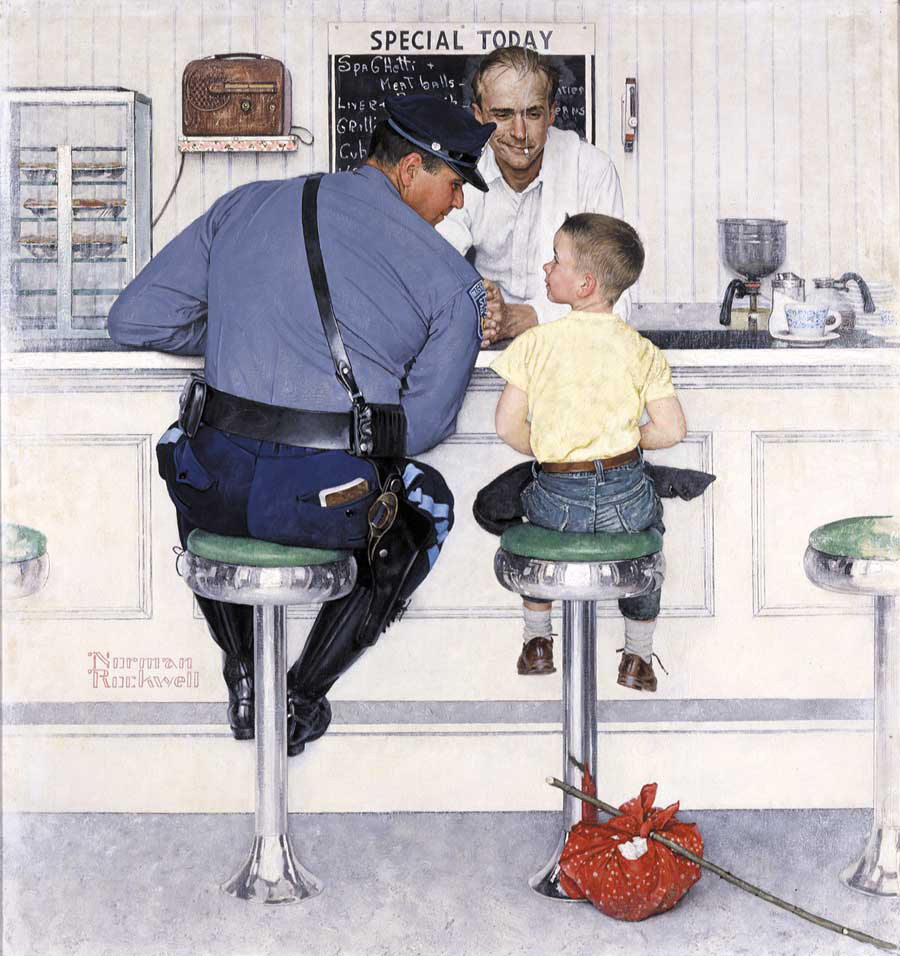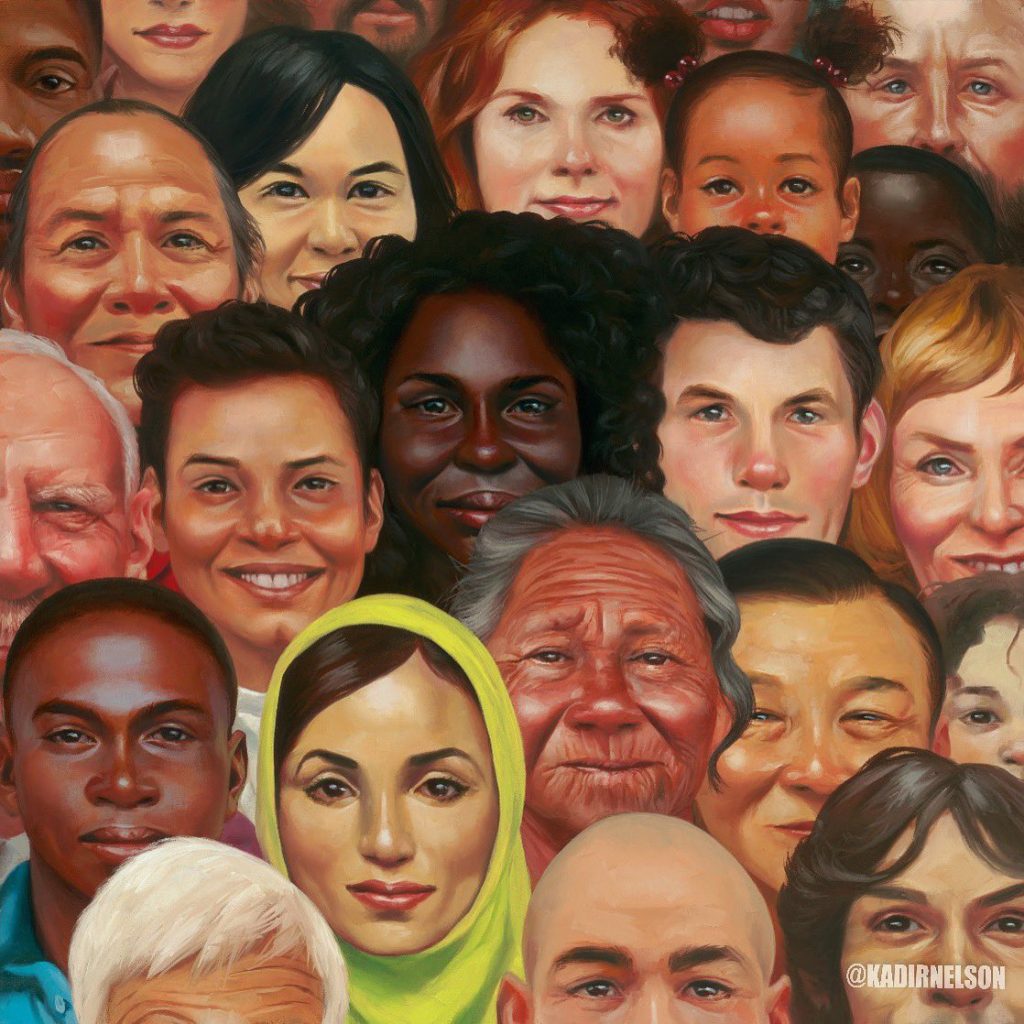What Emphasis Did the Teaching of Language Arts Begin With?

With the international threat of COVID-nineteen, educators and families face up the problem of keeping students separated while however providing linguistic communication enrichment programs when faced with shuttered schools and reduced capacities. These are challenging times for language learners who cannot attend classes or meet confront to face with tutors and need inspiring, convenient spaces to practice language and grow vocabulary.
Mobile-assisted linguistic communication learning (MALL) with smartphones and personal digital administration bridges the knowledge gap and expands the boundaries of where and how languages are taught and learned. Several benefits of mobile-assisted learning in using visual arts to teach language are discussed. How can existing literature, core beliefs, standards-based learning frameworks, and virtual resources for using visual thinking strategies (VTS) with art assistance to improve linguistic communication skills?

The new Louvre in Saudi Arabia, which opened in 2017, is a partner of the globe's most famous art museum, the Louvre of Paris. It features Eastern and Western artworks from prehistory to modern times. It has one of the near virtually accessible children's museum learning experiences, with an app for tablets in half dozen languages: Arabic, English language, French, Mandarin, German, and Hindi.
Mobile and wireless technologies have created an ever-changing surroundings for learning that is more directly connected to real-world artifacts and living artists. Kukulska-Hulme (2009) offered reflections on how, aslope formal teaching, the outside-of-schoolhouse opportunities to access learning resources on both fixed and mobile devices accept multiplied. For instance, in the MyArtSpace project (Sharples et al., 2007), students went to a museum and used their mobile phones to view, analyze, and discuss multimedia content linked to specific exhibits. They shared with peers their observations, artifacts, audio, video recordings, and notes. The results showed the effectiveness of using a mobile device to support and extend second-language learning in self-directed ways, especially to build knowledge of vocabulary.
Shadiev, Liu, and Hwang (2020) reviewed the literature from 2007 to 2022 concerning mobile language learning and ended that elementary through college students had positive perceptions of mobile language learning and that information technology had positive furnishings on language proficiency.
The researchers suggested teachers design learning activities based on a student-centered arroyo in authentic environments focused on solving real-world issues. Instructors and students were recommended to create and share content on diverse subjects with other students and instructors from the same or different schools.
Visual thinking strategies (VTS, 2019) are used by schools and museums to incorporate art as the medium past which students discuss and share their opinions. VTS are used for exploring artwork to amend the language output of speaking and writing for commencement- and 2nd-language conquering students.
Online art galleries brandish artwork from current, by, future, or real-time exhibitions. VTS enquire 3 questions of learners: What'due south going on in this picture? What do you see that makes you say that? What more tin we detect?
Student oral and written production virtually a multifariousness of artworks demonstrated increased critical thinking skills, cultural awareness, and collaboration with peers. A study past Bomgaars and Bachelor (2019) indicated that by way of engaging in VTS, L2 high schoolhouse students showed significant gains in various writing skills too equally the quantity of speaking product.
Becker (2019) reviewed the arts integration, language, and literacy studies and found positive outcomes in print knowledge, alphabet cognition, syntax, vocabulary, narrative, reading, and writing for children with language impairment and other disabilities using the visual arts. Additional insights from her review included that visual-based experiences capitalize on students' nonverbal learning strengths and can help recoup for the effects of L1 language damage, which impedes expressing ideas, feelings, and personal feelings.
Core Behavior
Students in the digital 21st century take been brought up in a culture dominated past visuality. With a critical eye, students learn that artworks often tell stories. The fine art shifts the focus from the self-conscious learner to the work of art. Multilingual learners employ and develop language through activities that intentionally integrate multiple modalities, including oral, written, visual, and kinesthetic modes of communication (WIDA, 2020). Visual stimulation promotes active exploration of the language. Language and art can exist used together productively (Vasquez, 2018). When a concept is non clear in its written class, the visual form tin can assist the learner to comprehend. Likewise, when the visual form is disruptive and unclear, the written class tin can facilitate understanding. To comprehend both texts and art requires sustained observation and attending to detail. In that location are many competing screen images in students' net. Slowing down is required to find the story awareness of how artists visually tell their stories through the use of colour, line, gesture, composition, and symbolism. Some art does non tell a story and is less about lives, history, and things simply more nearly the exploration of color, line, and shape.
According to Becker (2019), arts-integrated lessons can address a range of linguistic communication and literacy components aligned with multiple standards, such as the National Coalition for Core Arts Standards, 2014; WIDA, English Language Development Standards, 2020). Students' learning experience may exist maximized by viewing examples of standards-based learning activities for beginning, intermediate, and avant-garde language learners. Teachers can develop lesson plans and communicate these to students. Included in the plans should be the purpose, objectives, activities aligned to standards, recommended websites, and rules of cyber etiquette and safety. This tin promote collaboration amongst students and help establish groups to adjust students who may non have smartphones or net access. Teachers should apply fix procedures for receiving and sending messages.
A practical process for using art with MALL for starting time, intermediate, and advanced language learners every bit a means of education follows.
Starting time Language Learner

ELP 1 Reading: Search for topics on websites, in libraries, or using other sources with a partner from a list.
VA: Re7.ii.Ka: Describe what an image represents.
Essential Questions: "What'southward going on in this picture? What do you encounter that makes y'all say that? What more than can we discover?" (VTS, 2019)
Activities: Ask students to break the ice and chat with friends to come across what virtual museums they like and why. Take notes on the museum exhibits and send the notes equally a text bulletin to the grade or to the instructor. Use the photographic camera characteristic to copy and store favorite works of art. Create a scavenger hunt for finding interesting exhibits. Make drawings of paintings seen and share with others (Reinders, 2010).
Intermediate Language Learner

ELP 1 Writing: Integrate data from multiple sources to list, summarize data, and/or produce poems or short stories.
VA: Cn11.1.1a: Sympathize that people from different places and times have fabricated art for a variety of reasons.
Essential Questions: "What is the story beingness told? What exercise y'all retrieve happened earlier this scene? What do you think happened side by side? What emotions do y'all notice in the artwork? What is the meaning or message? What title would y'all give this artwork?" (Ingram, 2017)
Activities: Employ the device's voice recorder to share stories about artwork. Exercise collaborative writing in which students create a story together by sharing and calculation 1 text message at a time.
Advanced Language Learner

ELP one Writing: Respond questions to agree or disagree with current issues from models depicted visually or graphically.
VA: Cn10.1.2a: Create works of art about events in the home, school, or community life.
Essential Questions:
1. Depict: What do you see? How are the elements of line, colour, texture, and shape used?
ii. Analysis: How is the work bundled? How did the artist apply contrast, emphasis, unity, and residuum?
3. Interpretation: What mood or bulletin does the art communicate to you? How did the creative person use colour, space and contrast?
iv. Sentence: Is this a successful work of art? How does the message of the art make yous feel? (Feldman, 1994)
Activities: Use a mobile phone to keep a multimedia blog about personal experiences, museums visited, and favorite exhibits. Practice a linguistic communication commutation where two students who want to learn each other'due south languages piece of work together and swap text letters. Deed equally a tour guide for a virtual museum (Wigglesworth, 2020).
Conclusion
MALL using VTS with fine art provides teachers, students, and their families a promising medium for instruction that is supportive of a range of needs, interests, and ages of L1 and L2 students.
A review of literature and studies revealed that MALL supports a range of linguistic communication and literacy outcomes that are aligned with multiple standards. Multilingual learners use and develop linguistic communication through activities that intentionally integrate multiple modalities, including oral, written, visual, and kinesthetic modes of advice.
References
Becker, P. A. (2020). "Educational activity Language and Literacy through the Visual Arts: An interdisciplinary, literature-based approach." Teaching Exceptional Children, 52(iii), 166–179.
Bomgaars, J., and Available, J. W. (2019). "Visual Thinking Strategies: Exploring artwork to improve output in the L2 classroom." Journal of Foreign Language Education and Applied science, five(1).
Kukulska-Hulme, A. (2009). "Will Mobile Learning Change Linguistic communication Learning?" ReCALL, 21(ii), 157–165.
Feldman, East. B. (1994). Practical Art Criticism. Englewood Cliffs, NJ: Prentice Hall.
Ingram, C. (2017). "82 Questions to Ask about Art." Art Course Curator. artclasscurator.com/82-questions-to-ask-about-a-piece of work-of-art
National Coalition for Core Arts Standards. (2014). National Core Arts Standards. https://world wide web.nationalartsstandards.org
Reinders, H. (2010). "Twenty Ideas for Using Mobile Phones in the Language Classroom." English Instruction Forum, three. https://files.eric.ed.gov/fulltext/EJ914893.pdf
Shadiev, R., Liu, T., and Hwang, Due west. Y. (2020). "Review of Research on Mobile- Assisted Linguistic communication Learning in Familiar, Authentic Environments." British Journal of Educational Technology, 51(three), 709–720.
Sharples, M., Lonsdale, P., Meek, J., Rudman, P. D., and Vavoula, 1000. N. (2007). "An Evaluation of MyArtSpace: A mobile learning service for schoolhouse museum trips." Proceedings of 6th Annual Conference on Mobile Learning, 238–244.
Vasquez, D. (2018). "Teaching a Second Linguistic communication through Art." Yale- New Haven Teacher'south Establish. http://teachersinstitute.yale.edu/curriculum/units/1981/4/81.04.12.x.html
Visual Thinking Strategies. (2019). https://vtshome.org
WIDA (2020). English Language Development Standards. https://wida.wisc.edu/teach/standards/eld/2020
Wrigglesworth, J. (2020). "Using Smartphones to Extend Interaction beyond the EFL Classroom." Computer Assisted Linguistic communication Learning, 33(4), 413–434.
Images
Bey, Osman Handid (Creative person) (1878). Young Emir Studying, Oil on sheet, 45.v x xc cm, Louvre, Abu Dhabis, Saudia Arabia.
Nelson, Kadir (Artist) (2017). So Together,Watercolor, twenty x20 cm, moving-picture show book, Blueish Sky, White Stars by Sarvinder Naberhaus, Dial Books.
Rockwell, Norman (Artist) (1958). Delinquent, Oil on canvas, 35¾" 10 33½ cm, Comprehend, Sabbatum Evening Post.
Wyeth, Northward.C. (Artist)(1923). The Giant, Oil on canvas, 182.nine × 152.4 cm, Brandywine River
Museum of Art, Chadds Ford, PA.
Links
i. https://www.louvreabudhabi.ae/en/Whats-Online/kids-app-for-tablets
2. http://www.myartspace.com
3. https://world wide web.nationalartsstandards.org
four. https://wida.wisc.edu/teach/standards/eld/2020
Fine art Museum Links
Louvre Abu Dhabi, the Children's Museum (www.louvreabudhabi.ae/en/Explore/childrens-museum)
Louvre, Paris, France (www.louvre.fr/en/visites-en-ligne)
Metropolitan Museum of Art (www.metmuseum.org/art/online-features/metkids)
The J. Paul Getty Museum (www.getty.edu/education/teachers/classroom_resources/curricula/esl3)
The New Children's Museum – Art Museum for Kids (https://thinkplaycreate.org/visit)
The San Diego Museum of Art (world wide web.sdmart.org)
Nile Stanley, PhD ([email protected]), is a regular correspondent to Linguistic communication Magazine with xv articles published. He is associate professor of literacy and arts education at the University of Due north Florida and a visiting scholar to China, Vietnam, and Deutschland.
thornhillactem1984.blogspot.com
Source: https://www.languagemagazine.com/2020/10/22/language-learning-with-a-side-of-art-to-go/
0 Response to "What Emphasis Did the Teaching of Language Arts Begin With?"
Post a Comment